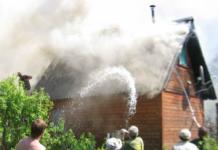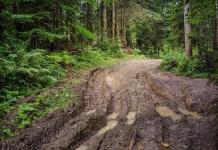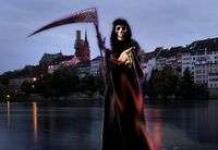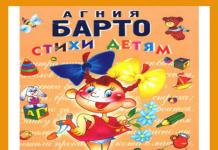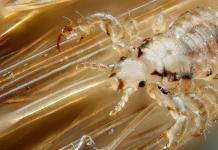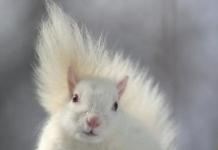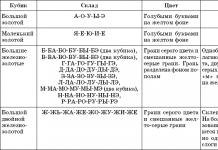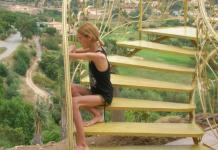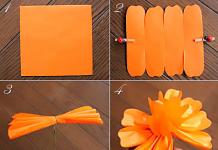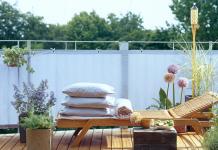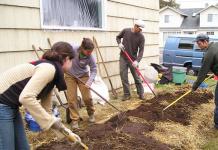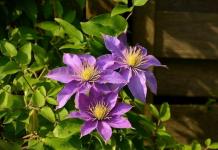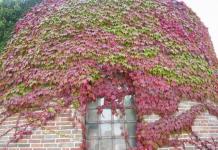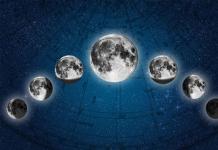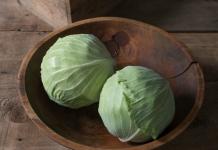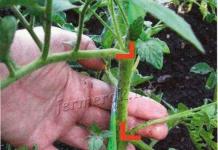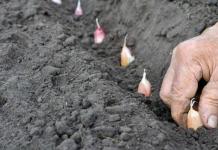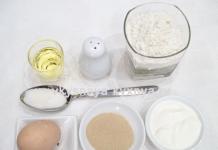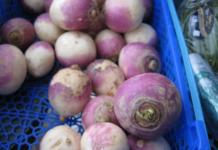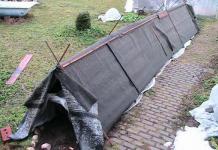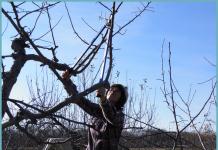The book is original, first developed specifically for primary school determinant atlas. It will help the student learn to recognize the natural objects around him, recognize the names of the most remarkable plants, animals, mushrooms, stones, constellations. Atlas can be used in the classroom and in extracurricular activities, for joint activities of a child and an adult in a family. The book will become a constant companion of a younger student during excursions, walks with parents, summer vacations.
From earth to sky. Determinant atlas. Pleshakov A.A.
Description of the tutorial
LEARNING TO DETERMINE STONES
Do we always look closely at our feet? Not only in order not to stumble, not to fall. And in order to find, lift and examine one of the wonders of nature - a stone.
The stones are the children of the Earth itself. Our planet, folded, built mainly of solid rocks, gives us either a motley piece of granite, or yellow-brown flint, or a black transparent plate of mica ... Here you go. Admire. Each stone is beautiful in its own way, each is interesting.
When we say "stones" we mean a variety of minerals and rocks. Minerals are natural substances. And rocks are natural compounds of minerals.
Many minerals are in the form of crystals. These are solid bodies with a very strict arrangement of their constituent invisible particles. Therefore, the crystals have the correct shape, smooth edges and are always very beautiful.
Since ancient times, stones have played a huge role in people's lives. There was even a Stone Age in the history of mankind - a time when our ancestors made almost everything from stone: tools of labor and hunting, household items.
Some stones have been used by people in construction for a long time. For example, granite, limestone, sandstone.
Many others are used to make decorations. The most beautiful stones are called gems. Some of them are especially rare and valuable. They are called gemstones or gemstones. TO precious stones include, for example, diamond, ruby, emerald, sapphire. They are all wonderful, but the "king of stones" is the diamond. Interestingly, a diamond mined in nature is not so beautiful. The master makes him beautiful: he applies edges, polishes, grinds. This turns the diamond into a beautiful diamond, which is then used to make jewelry. The second group of gems is usually called jewelry and ornamental stones. These are rock crystal, malachite, rose quartz, opal and others. The third group is made up of ornamental stones, which include, for example, jasper, onyx, selenite, patterned
flint. All these stones are used to make a wide variety of jewelry.
There are many other "professions" with stones. For example, diamonds - the hardest stones - are used in cutting tools (glass cutters and others), and rubies in lasers.
Take a closer look at the rocks around you. Look for them specifically. Build a small collection. You will surely find interesting stones somewhere in the yard, in the park, on a country road, on the river bank. If you are by the sea, collect some beautiful pebbles. How smooth and smooth did the waves of the sea make it! Admire it and leave a few pebbles for your collection. In winter, they will remind you of the beautiful sea and wonderful summer vacations. Take a closer look at what houses are built of, of which subway walls and monuments are made. Take a close look at the decorations in your home. Perhaps some of them are made of stone or with the addition of stone. If an exhibition of gems opens in your city, try to visit it. You will find yourself in a unique kingdom where the beauty of nature and the skill of people who create magnificent works of art from stone rule. Be sure to visit the museum and get acquainted with the stones that are presented there. V local history museum you will see the minerals and rocks of your region. In the geological or mineralogical museum you can admire the stones brought from different parts of our country and from other countries.
The world of stones is amazingly diverse, many-sided. In our atlas you will find only a few of them, those that are most likely to be found in nature, in the city or at home.
It is quite difficult to identify stones because many of them are very variable in color and other properties. That is why some stones (granite, marble and others) are represented by several drawings in the atlas-identifier. When identifying rocks and minerals, look especially carefully at the drawings and read the descriptions, trying to highlight the main features. So, granite consists of grains of several minerals; in a piece of peat, the remains of the plants from which it was formed are clearly visible; anthracite has a strong luster.
Flint is often found in nature, usually in the form of nodules, covered with a whitish crust on the outside. He himself can be of different colors - brown, yellow, gray and even black. Stones with a pattern come across. The flint looks like it has been waxed. This stone breaks down quite easily into sharp debris. Therefore, primitive people made of it their tools of labor and hunting - chops, scrapers, knives, arrowheads and spearheads. With the help of flint, sparks were carved to kindle a fire.
Pumice is a light, porous stone that looks like a sponge. He doesn't sink in water. This rock is formed by volcanic eruptions from lava foam saturated with gas bubbles. Pumice is petrified lava foam. Many people can get to know her in their bathroom - pieces of this stone are used for skin care.
Sandstone is a rock consisting of cemented grains of sand. This stone is often used as a building material.
Rock salt (galet mineral) is the salt that we add to food. But only salt on our table is ground into powder, and in natural underground deposits it lies in the form of a stone. Rock salt crystals are very beautiful. Numerous small crystals are easy to find in a pack of coarse table salt.
Considering these crystals, imagine an underground city-palace, where everything is made of rock salt. There is such an amazing underground museum in Poland, in the place where salt was once mined.
Granite is gray, pink, red. It can often be seen in cities: walls of some buildings are faced with granite, river embankments are built from it, pedestals for monuments are made. Granite is a rock consisting of grains of several minerals. These are mainly feldspar, quartz and mica. Colored grains are feldspar, translucent, sparkling - quartz, black - mica. "Grain" in Latin is "granum". This word gave rise to the name "granite".
Feldspar is the most abundant mineral on the earth's surface. Many varieties of feldspars are known. Among them there are white, gray, yellowish, pinkish, red, green stones. Most often they are opaque. Some of them are used to make jewelry.
Quartz is a mineral that is part of granite, but is often found on its own. There are quartz crystals ranging in size from a few millimeters to several meters! Transparent colorless quartz is called rock crystal, opaque white quartz is called milky quartz. Many people know transparent purple quartz - amethyst. There are rose quartz, blue quartz and other varieties. All these stones have been used for a long time to make various jewelry.
Mica is a mineral consisting of plates, thin leaves. These leaves are easily separated from each other. They are dark, but transparent and shiny. Mica is a part of granite and some other rocks. Interestingly, in the past, mica was often used instead of glass in windows.
Peat is not difficult to recognize: the remains of the plants from which it was formed are clearly visible in it. The main peat-forming plant is peat moss (sphagnum). In addition to it, other plants also enter the peat deposits.
Brown coal is not very dense and does not shine. He stains our hands with brown coal powder. How did this coal come about? The peat formed a long time ago, over time, compacted, compacted and gradually turned into brown coal. In it, the remains of individual plants are already invisible, as in peat.
Bituminous coal is much denser than brown coal, black in color, with a noticeable, although not very strong, luster. This coal was left to us by plants that lived on Earth many millions of years ago.
Looking at a piece of coal, you may see an imprint of some ancient plant on it. Let's try to mentally travel back to those distant, distant times when this plant was alive. The earth looked very different then than it does now. There were no birds, no animals, no people on it yet. And the plants were different. Everywhere we would see giant tree ferns with thick pillared trunks. It is from these and other similar plants that coal was formed. The stone that you hold in your hands is amazing news to us from the infinitely distant past.
Anthracite is a particularly valuable coal. It has a strong metallic luster. This coal was formed as follows: coal in the bowels of the Earth over time became even more compacted and gradually turned into anthracite.
From earth to sky. Determinant atlas.
This section of the atlas presents wild-growing herbaceous plants in open areas. Open spaces are any areas where there are not many trees. This is a meadow, and a pasture, and a vacant lot, and a roadside, and a village courtyard. Here, herbaceous plants are the main green inhabitants, and it is here that they are especially diverse.
Flowers on it are very helpful in identifying plants. Therefore, in the atlas, we collected on some pages plants with white flowers, on others, for example, with yellow, with blue or purple, with pink or red. Plants that do not have large and bright flowers are placed separately. Such plants have flowers, but they are small, inconspicuous and not particularly striking.
 |
 |
 |
 |

|
 |
 |
 |
 |
 |
 |
 |
 |
 |
 |
 |
 |
 |
Dear Readers!
All materials from the site can be downloaded absolutely free. All materials are checked by antivirus and do not contain hidden scripts.
The materials in the archive are not watermarked!
The site is updated with materials based on free work authors. If you want to thank them for their work and support our project, you can transfer any amount that is not burdensome for you to the account of the site.
Thank you in advance !!!
Atlas-determinant "From earth to sky" Pleshakov opens up new facets in the knowledge of nature and environment... For example, this online textbook says that the huge reserves of coal with which we heat our houses, we have been left with plants that lived on the territory of Russia many millennia ago. And if the atlas-determinant From Earth to Heaven is read online, then you can find out that the limestone that we use for cladding houses was formed from the remains of tiny microorganisms that lived long ago in the depths of the sea. By the way, chalk is also one of the many varieties of limestone and now we use it in schools for writing on a blackboard. But the most famous and desirable is malachite, which our beauties wear with pleasure in the form of jewelry. Pleshakov's atlas-qualifier “From Earth to Heaven” contains completely unique information that will be of interest to even the most inveterate skeptics.
Pleshakov's atlas-qualifier "From Earth to Heaven" opens up new facets in the knowledge of nature and the environment for schoolchildren. For example, this online textbook says that the huge reserves of coal with which we heat our homes, we have been left with the legacy of plants that lived in Russia many millennia ago. And if the atlas-determinant From Earth to Heaven is read online, then you can find out that the limestone that we use for cladding houses was formed from the remains of tiny microorganisms that lived long ago in the depths of the sea. Disputes about the origin of the universe do not subside to this day and force nuclear physicists to seek confirmation of the big bang, which, according to theory, occurred several billion years ago. A tinder fungus growing on a tree trunk is also a representative of the mushroom kingdom. Most of the mushrooms included in our identification atlas belong to a group called cap mushrooms.
Atlas-determinant From earth to sky Pleshakov watch online
The Turkish carnation is very widespread. It happens up to 60 cm in height. Its flowers are medium-sized, but collected in large (up to 12 cm in diameter) inflorescences. The flowers of the Turkish carnation can be white, cream, pink, red. Dicentra is a plant with bowed stems and flowers of an unusual shape, because of which it is also called "broken heart". When you can download the Atlas-determinant From Earth to Sky Pleshakov, you will see that Salvia attracts attention with bright red flowers on the same bright red stem.
Nasturtium is a short plant, often forming very long whips. The flowers of nasturtium can be eaten and taste like a radish. Online textbooks are very helpful in their studies and bring positive emotions to our children. Previously, mushrooms were considered plants. But now scientists distinguish them into a special kingdom of living nature. There are a lot of mushrooms in the world. And they are very, very different. Not everyone knows that the mold that covers the crust of bread is a fungus.
You will also be interested in
- Neurology and neurosurgery Gusev is a textbook in 2 parts, written by famous authors Gusev E.I., Konovalov A.N., Skvortsova, who [...]
- General biology textbook Mamontov was published in 2015. Let a material point (body) under the action of force F make an elementary movement [...]
- Atlas of the determinant from earth to sky 2018 Pleshakov is a universal atlas that covers all plants and animals from earth to sky. […]
In the atlas to Pleshakov's textbooks, almost the entire animal world is considered, from small insects to large mammals. The child will learn to identify animals by pictures, remember their names, learn to divide animals into groups, that is, classify them. Atlas will be an excellent assistant in the preparation of lessons on the subject the world in grades 1-4 of elementary school, especially in the Perspective and School of Russia program, which are based on Pleshakov's textbooks, where he often refers to the search for material in the atlas-determinant "From Earth to Heaven", in the workbooks there are also tasks for the atlas- determinant.
All classifications are very conditional, but by them it is easy to find the desired animal and find out its name. Pictures of animals for the creation of the atlas were taken from the Great Soviet Encyclopedia and reference books on zoology.
Atlas-guide "From earth to sky". Animals
When it comes to animals, first of all, everyone remembers four-legged and woolly mammals. But they are not the only ones belonging to the animal kingdom. In addition to mammals, it includes a huge variety of other organisms: fish, birds, insects, arachnids, molluscs, starfish, all kinds of worms and millipedes. Man also belongs to the animal kingdom, but is traditionally considered separately.
Unlike plants, most animals are able to independently move where they need to, and therefore it is much more difficult to identify them from the atlas. If you scare it, it will run away, hide. Therefore, you need to focus all your attention on it, consider and remember the color, sizes, so that you can then find it using the atlas-determinant.
Invertebrates
Invertebrates are animals without a backbone: snails, worms, insects, spiders, crustaceans, and millipedes. They are usually not too large. The exception is some crabs, tropical centipedes and spiders, which can reach quite large sizes.
Molluscs and worms
Molluscs live in seas, fresh water bodies and on land. Snails are gastropods with one shell at the top. Gastropods means that the abdomen of the mollusk is its only leg, with the help of which the animal moves. And there are also bivalve molluscs, which have two shells and they are tightly adjacent to each other, the mollusk is thus completely protected inside the shells from all sides. And worms and leeches have no shells, only a long soft body.
Arachnids
These are spiders, ticks and scorpions. They all have 8 legs, and the body is covered with a dense chitinous membrane.

Crustaceans and centipedes
Crustaceans include crayfish, crabs, cyclops, daphnia, woodlice and the like.

Insects
Insects are also invertebrates. Unlike spiders, they have 6 legs, not 8. Insects include beetles, butterflies, dragonflies, bugs and cockroaches, mosquitoes and flies, bees, grasshoppers.
Beetles
Beetles are insects whose front wings have evolved into rigid elytra. Hence their scientific name "coleoptera". Before takeoff, the beetle first raises these wing flaps, and only then flaps its wings.
Large beetles: rhinoceros beetle, stag beetle, marble beetle, scarab beetle, oak barbel, large goldfish, edged beetle, large water lover.

The largest beetle living on Earth - lumberjack titanium living in South America. The length of its body (without antennae) can reach 16 cm. Adult beetles have extremely sharp "jaws" - mandibles, which can break even a pencil. Sensing danger, they begin to hiss and try to injure the enemy with their mandibles.
Not too big beetles: May beetle, bronze, beautiful odorous, gray long-wattled lumberjack, dung beetle, steppe sludge, ground beetle.

Small beetles: ladybug, black nut beetle, iris, flour beetle, leaf beetle, bark beetle, bee beetle, weevil, Colorado beetle, red predator, soft beetle, big firefly, whirligig.

Butterflies
The Russian name "butterfly" comes from the Old Slavonic word "babъka", which denoted the concept of "old woman" or "grandmother". In the beliefs of the ancient Slavs, it was believed that these were the souls of the dead, so people treated them with respect. The most remarkable thing about butterflies is their large wings. The pattern of the butterfly's wings varies from species to species and captivates with its beauty. The appearance and coloring of the butterfly's wings serve not only for beauty, but also act as a protective camouflage that allows you to blend in with the environment.
Daytime butterflies are active during the day and sleep at night.

Moths and moths are active at dusk. Moths differ from butterflies in a plump and fluffier body. At night, as a rule, moths are active, not butterflies.

Agrippin scoop or, as it is otherwise called, Tizania Agrippina is the largest butterfly in the world, with a wingspan of usually 30 cm. The butterfly is nocturnal.
Caterpillars
A caterpillar is the larva of a butterfly, moth, or moth. Caterpillar food is very diverse - from plants to honey and wax.

Dragonflies
Dragonflies are relatively large insects, with a mobile head, large eyes, short antennae, an elongated slender abdomen and four transparent wings with a dense network of veins. Dragonflies are predators that feed on insects caught on the fly. 
Grasshoppers and related insects
If in front of you is an insect that jumps quite well, and also knows how to chirp, it is most likely a grasshopper or a related insect. Very often, grasshoppers have an appearance and color similar to appearance and the color of leaves or other parts of plants on which they live.

Bedbugs
A feature of most bedbugs is odor glands. The secretions of these glands have a characteristic odor that is unpleasant for humans, which scares off enemies.

Bees, wasps, bumblebees and ants
These insects build houses for themselves and live in them in large families. They have 3 pairs of legs and 2 pairs of wings.

Mosquitoes and flies
Mosquitoes are most common in humid climates and remain active during the warmer seasons. They have a thin body, 3 pairs of long thin legs and 1 pair of wings. Flies also have only 2 thin wings and 3 pairs of legs, but the legs are shorter than mosquitoes, large eyes and a plump body.

Common mosquito (squeak)- a type of mosquito that is found everywhere, overpowering humans and animals with its intrusiveness. Adult squeaky mosquitoes are 3-8 mm in size. Only females drink blood, and males feed on nectar. Therefore, females have a long sting on a small head.
Insects living in houses

Unusual insects

Fishes
Fish are vertebrates with gills, fins, and scales. They live in water: seas, oceans, rivers and lakes.



Aquarium fish
In aquariums, we usually breed small and beautiful tropical fish from the warm seas that live near coral reefs.


Amphibians
Amphibians, or amphibians, are cold-blooded animals adapted to life both in the aquatic environment and on land. Most of them first breathe with gills, and then, in adulthood, switch to pulmonary respiration. Amphibians include frogs and toads, salamanders, newts and worms.

Reptile
Reptiles are vertebrates that move mainly by crawling, dragging their belly along the ground. Another name for these animals is reptiles. These include snakes, turtles, crocodiles, lizards. Their skin is dry, the outside is covered with scales, shields, and maybe a shell. Reptiles breathe with their lungs. All reptiles are cold-blooded, they depend on the ambient temperature. They have a spine. A well-formed skeleton and musculature provide excellent mobility.

Common viper- poisonous snake. Lives in forests, humid lowlands, along river banks, near swamps and lakes. They know how to swim. The length of the snake can reach almost 1 meter, but more often snakes are not more than 60-70 cm. They feed on mice, lizards, frogs and small birds. Vipers come in a variety of colors from black to gray or brown with a dark diamond pattern on the back. Seeing a viper in nature, you need to stop and slowly begin to move back, facing the snake. If you scare a viper with shouts or touch it, it will attack and bite. A snakebite requires urgent medical attention.
Already ordinary not dangerous to humans. He can live in the same places as the viper, but more often found along the banks of reservoirs. Sizes, like that of a viper, up to 1 meter in length. They differ in the shape of the head: in the snake it is oval, in the viper - like a triangle with rounded edges. Already black, but on the sides of the head there are 2 yellow-orange specks, which make it possible to distinguish this snake from other snakes. It swims well under water and on its surface. Snakes feed mainly on frogs.
Birds
Birds are vertebrates covered with feathers. All birds have wings, but not all birds can fly. The birds lay eggs from which the chicks hatch.
Some bird species do not fly far from their habitat, while others - migratory birds - fly long distances in spring and autumn. They hibernate in warm countries, and in the summer they fly to the north, where there is more food and there is an opportunity to feed the chicks.
Do not fly away from us: sparrows, tits, bullfinches, jay, nuthatch, jackdaw, pigeon, crow, magpie, woodpecker.
Migratory birds: swallow, swift, wagtail, starling, lark, redstart, rook, cuckoo, sandpiper, thrush, crane, swan, duck, heron, wild geese.






Birds of our reservoirs

Predator birds

Birds of a living corner

Mammals
Mammals feed children with milk, hence the scientific name.
Rodents
Rodents are the largest order of mammals, which include mice, rats, hamsters, squirrels, porcupines, beavers and many other animals. They have a similar body and teeth structure. The teeth are adapted to the processing of solid plant foods, but some of them feed on small animals as well. Rodents are small, less often medium-sized animals. The largest representative is the capybara, or capybara, which lives in South America. The body length of a capybara reaches one and a half meters, and its weight is 60 kg. The smallest animal is a baby mouse. Its length is less than 5 cm.

Ungulates
Ungulates are combined into one group based on the presence of hooves. And some of them also have horns. All ungulates are herbivorous animals. They only eat plants, and deer eat lichens in addition to plants.

Beasts of prey
Everyone knows such predatory animals as the wolf and the fox, but there are also predators in our forests. These are ferret, marten, weasel, ermine and otter. Their food is other animals.

Different beasts
There are many different outlandish animals, for example, fruit bats. They are not birds, but they fly well. Their forelimbs are very similar to featherless wings. Other animals have their own interesting features, for example, the ability to live underground or change color depending on the season. And some even have thorns instead of wool, like a hedgehog and a porcupine. Hares feed exclusively on plant foods, and the bats, moles, hedgehogs and shrews are not averse to feasting on insects and worms.

Dogs
We will not bypass pets either. Man not only tamed them, but also bred different breeds. For example, dogs. Strong, large, hardy dogs are service dogs. They help the police and the military in the service. Hunters are adapted to hunting game, accompany the owner on the hunt. Decorative dog breeds decorate a house or apartment.


Beasts of the living corner
Little pets are decorative hamsters, white mice and guinea pigs. The smallest hamster in the world is Roborovsky's hamster. Its dimensions do not exceed 6 cm.

1. Seryozha wants to know what not to do during a thunderstorm. Add sentences yourself or with the help of a textbook.
Can't hide under tall trees, especially freestanding
Can't be near metal objects.
Can't hide from rain with metal objects.
It is forbidden swim during a thunderstorm.
Conduct a peer review with your deskmate.
2. Ant Question - a forest dweller - came up with tasks for you. Complete one of the options.
Option 1. Do you know poisonous plants?
Cut out the drawings from the Application and place them in the appropriate boxes. Check yourself with the tutorial. After checking the stickers are the drawings.
Option 2. Do you know poisonous mushrooms? Connect names and pictures with lines. First draw the lines with a simple pencil. Check yourself with the tutorial. After checking, draw lines with a colored pencil.

3. Which picture shows a viper? Fill in the circle. Which snake is shown in the other picture? If you don’t know, look in the atlas-determinant "From Earth to Heaven". Sign the names of both snakes. Using the drawing and information from the Atlas Identifier, compare these snakes. Make notes on p. eighteen.

Snake and viper comparison
Similarity:
- They can be found in the forest, near a reservoir, in a meadow.
- Both types of snakes do not attack humans first.
Differences:
- Snakes are longer than vipers and have a more elongated body.
- Snakes have yellow ears, vipers have a zigzag strip along the back.
- The head of the snakes is oval, and the head of the vipers is triangular.
- Lack of poisonous teeth - main characteristic snakes.
- You can often find snakes near water bodies, vipers prefer forests.
- Snakes feed on frogs, vipers mainly feed on mice.
4. As instructed by the textbook, create and draw symbols for the safety rules learned in the lesson.

5. With the help of the atlas-determinant "From earth to sky" prepare a message about any poisonous plants, mushrooms (of your choice). Write down a message plan.
Message plan:
- What does a poisonous plant raven eye look like?
- Places of growth, distinctive features
- Why you can't eat it, the consequences for human life and health
- What to do if a person accidentally ate a raven eye
Poisonous plant raven eye
The raven eye is a deadly poisonous plant. It is quite easy to recognize it - right from the center of four or five wide green sheets a thin stem breaks out upward, on which there is a single blue-black berry - the cunning raven eye.
This plant grows almost throughout Europe, as well as in Western Siberia and in the Mediterranean. Most often, it can be found in the dense undergrowth of mixed and coniferous forests, among thickets of bushes or in the shady part of ravines.
In no case should you pick and eat berries, leaves, roots or flowers of the crow's eye. Each part of the plant contains a very strong poison that can disrupt the work of the heart and central nervous system... A person begins to have dizziness, convulsions, diarrhea, vomiting, severe abdominal pain.
If urgent medical assistance is not provided to the victim, then the person may even die. Therefore, the first step is to call an ambulance and report the poisoning. While waiting for the doctor, you must try to clear the stomach of toxic substances:
- take a few pills activated carbon(at the rate of 1 tablet per 10 kilograms of the victim's weight);
- drink plenty of water - at least 1-2 liters;
- drink strong black tea;
- make an enema.

6. Using the book "Green Pages" (story "Insidious Doubles"), enter the names of dangerous twin mushrooms in the table.



